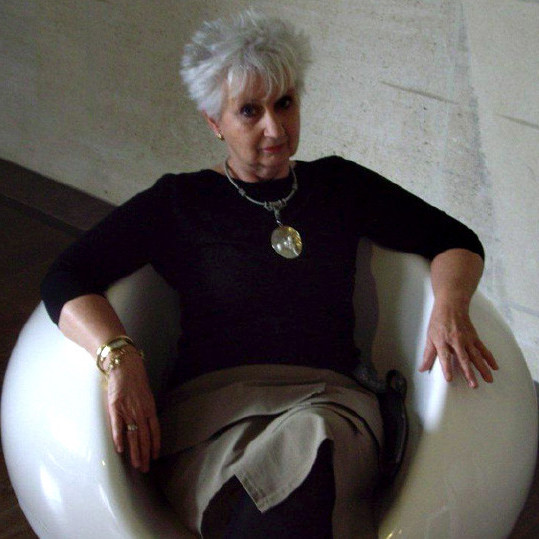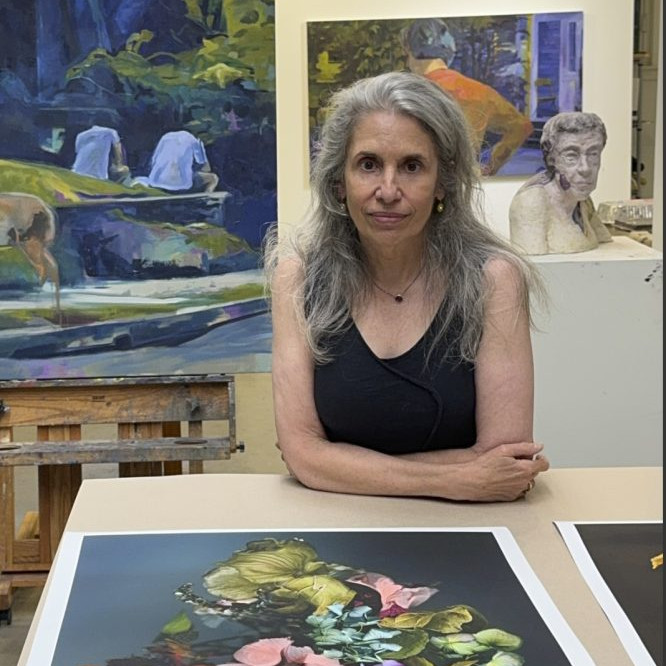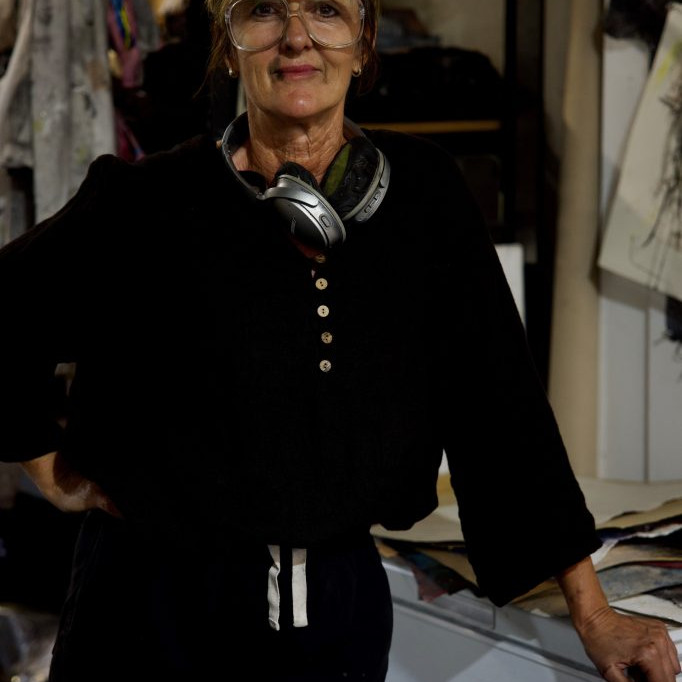Pete Monaghan Painter
You use the term ‘Vernacular’ Architecture, – Constructed of local materials, traditional techniques and reflecting cultural practices. Discuss this in reference to your paintings.
Buildings that appear to have ‘grown’ out of the landscape, constructed of natural boulders that have been rolled into place or stratified, slate-type rocks placed upon each other, colours particular to their region, local materials, and along with the ubiquitous ‘crinkly tin’ all form unique buildings that are in sympathy with their location. It’s easy to overlook these humble structures and we lose them in the name of progress.
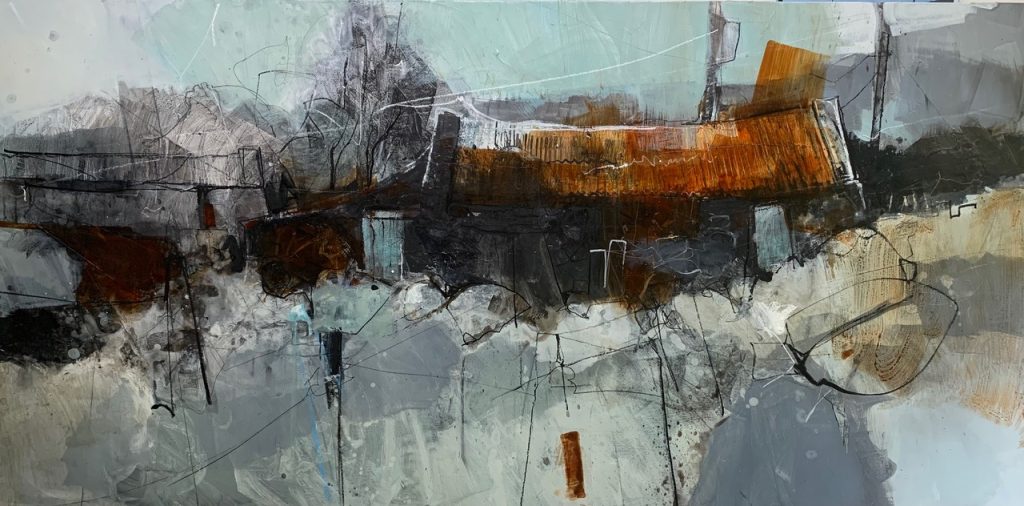
Do you sell your original work beyond Wales?
Yes, my work sells throughout the UK and Ireland and some works have gone further afield; USA, Germany, Australia, Russia. I only deal with galleries in Wales at present, some of the UK and Irish galleries have found the art marketplace challenging the last few years and having reduced I now find it may be a good time to broaden my scope again.
Discuss the use of a singular primary colour in, ‘Siopa Castell.’
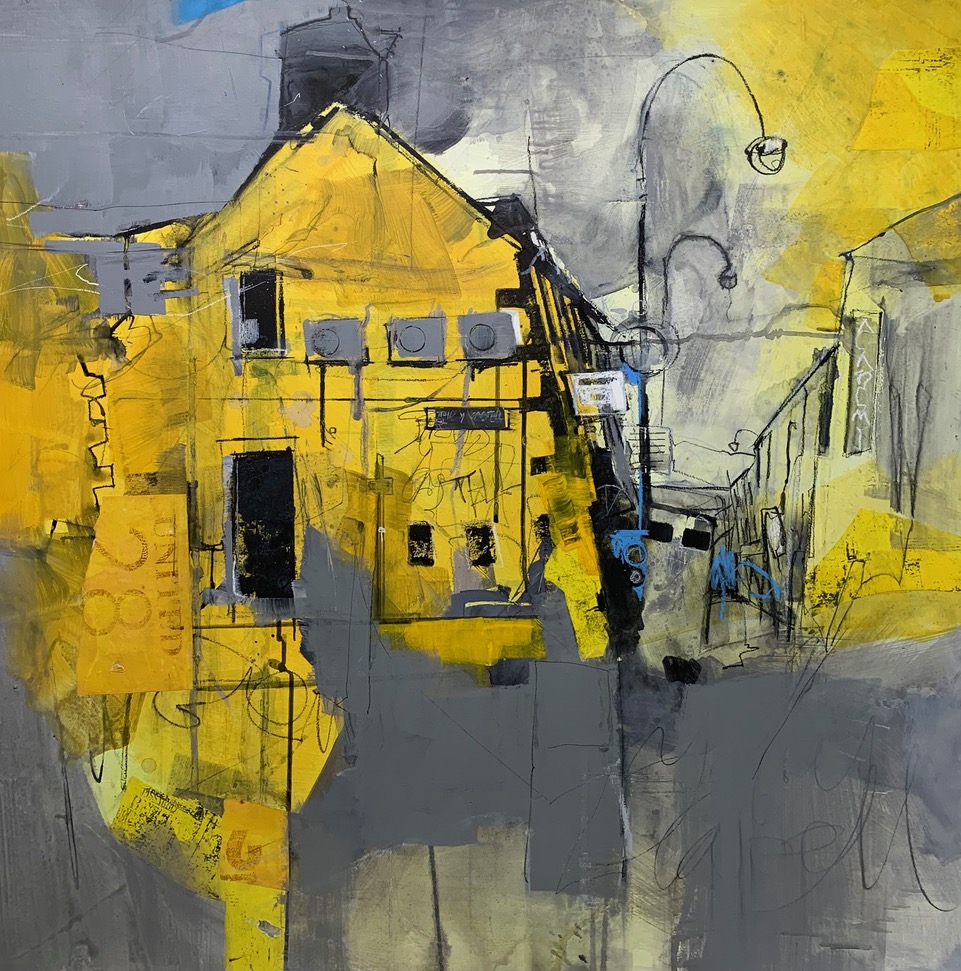
The use of a single primary colour in this painting is very simply to challenge myself. I don’t generally use many primaries, certainly not yellow and yet this building, in a local town centre caught my eye. It’s bright yellow stained walls and plethora of signage and exterior air-conditioning units and drainpipes gave it an industrial, urban and shabby feel that I particularly enjoy. I wanted to use yellow to sing out almost like a Basquiat painting.
Materials
Acrylic and collage with water-soluble crayons on wood panel.
Size
1 metre square.
Location
Location Currently held by Oriel Ffin-y-Parc Gallery in north Wales… https://welshart.net/artists/59-pete-monaghan/works/20487-pete-monaghan-siopa-castell- 2024/
Colour
Yellow! Neutral grey to calm areas that were becoming too busy. A flash of blue to give interest or excitement. Black lines in water-soluble crayons or acrylic ink, used for outlining/ emphasising and scribbling
Tell us about your “hidden” Studio space.
I was fortunate enough to have a studio in the ‘Old College’ in Aberystwyth, west Wales. It was the original home of Aberystwyth University, the first Uni in Wales. When the time came to renovate the very prominent seafront property, we, the artists, were re-housed to a temporary University building out of town which is wonderfully secluded in woodland, next to a small river. The University has been great in supporting us in this way and the building houses the Aberystwyth printmakers too. We will return to the old college when its renovated.
How important is it to you to be able to share your studio space and be able to relate to other artists?
I have a very small studio space (9 square metres) but I can shut the door to be alone if needed. Other artists and printmakers are often around and the impromptu meetings in the kitchen over a cup of coffee are mostly profound and stimulating. As mentioned I’m not sure there is a classic but certainly there are elements that I love and re-use time and again. Such as corrugated cardboard and old maps for collage. A welsh barn would be typical subject matter, I love the way they snuggle into the landscape and show evidence of hard graft over generations. I want to capture that in the work. There are also colours that could be regarded as favourites; ultramarine blue and burnt Sienna, van gogh brown, green-gold, transparent raw Sienna, transparent red iron-oxide, all from Golden or Liquitex.
Comment on the size of your work and how you have the majority at a standard size. My standard size would be 40 x 50cm. That seems to fit well with the work that I do. But it’s good to challenge that convention by working on extreme landscape format or square, or tiny or massive! If my studio was bigger I would probably favour a size more like 75 x 100cm. Using standard sizes is an economical decision, I can re-frame pieces if necessary and I like to keep things simple.
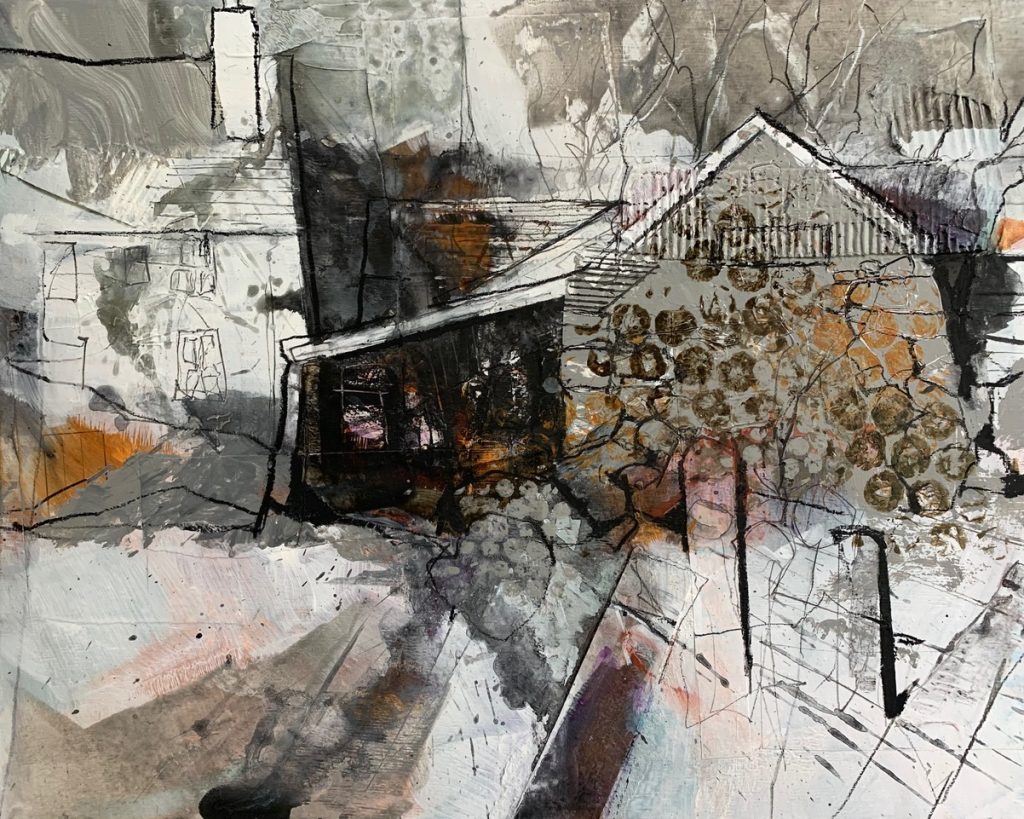
Explain about one of your wild card works.
Every work is definitely different and challenging in some way, there is not really any sort of standard work. I suppose that a ‘wild card’ piece would have to be off the scale different so… I recently tutored a workshop at a lovely venue in Yorkshire, England. They have developed a barn as a new working space and I ran a course working at large-scale. It was fascinating, not just what the students produced but my own work became more exciting and visceral for being able to throw paint around and retreat ten metres from the piece that I was working on.
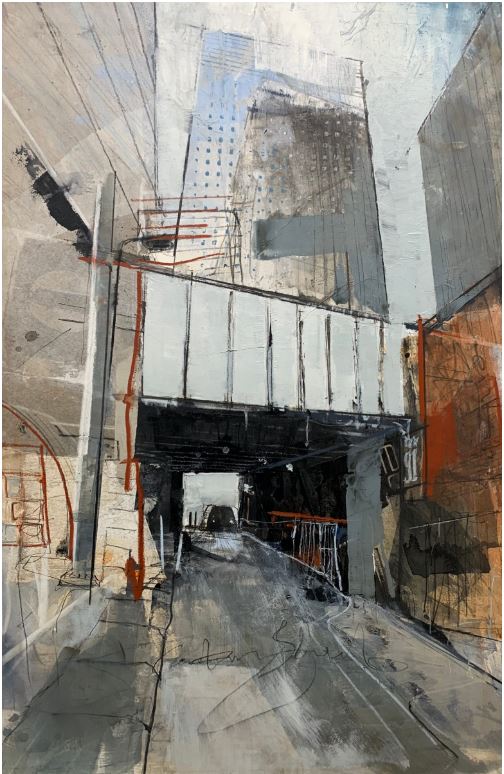
Discuss with us a classic Pete Monaghan.
As mentioned I’m not sure there is a classic but certainly there are elements that I love and re-use time and again. Such as corrugated cardboard and old maps for collage. A welsh barn would be typical subject matter, I love the way they snuggle into the landscape and show evidence of hard graft over generations. I want to capture that in the work. There are also colours that could be regarded as favourites; ultramarine blue and burnt Sienna, van gogh brown, green-gold, transparent raw Sienna, transparent red iron-oxide, all from Golden or Liquitex.
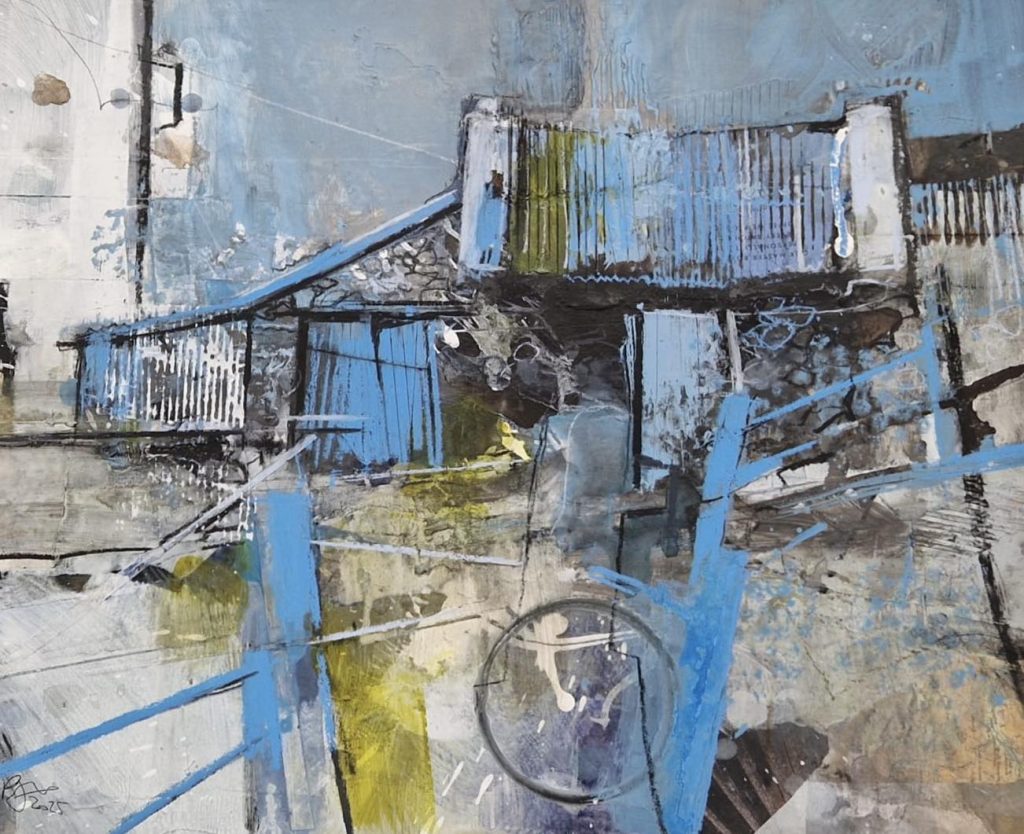
Comment on the size of your work and how you have the majority at a standard size.
My standard size would be 40 x 50cm. That seems to fit well with the work that I do. But it’s good to challenge that convention by working on extreme landscape format or square, or tiny or massive! If my studio was bigger I would probably favour a size more like 75 x 100cm. Using standard sizes is an economical decision, I can re-frame pieces if necessary and I like to keep things simple.
Comment on how you over paint on canvases but how you have this documented for the buyer and future buyers?
I paint on plywood panels. These are ‘blocked’ or ‘cradled’ at larger sizes. I often layer over work as part of the painting process and if a work is returned from a gallery then I’ll cast a very critical eye over it and maybe re-work the painting if it can be improved. I wouldn’t necessarily be documenting this process or informing the purchasers of it.
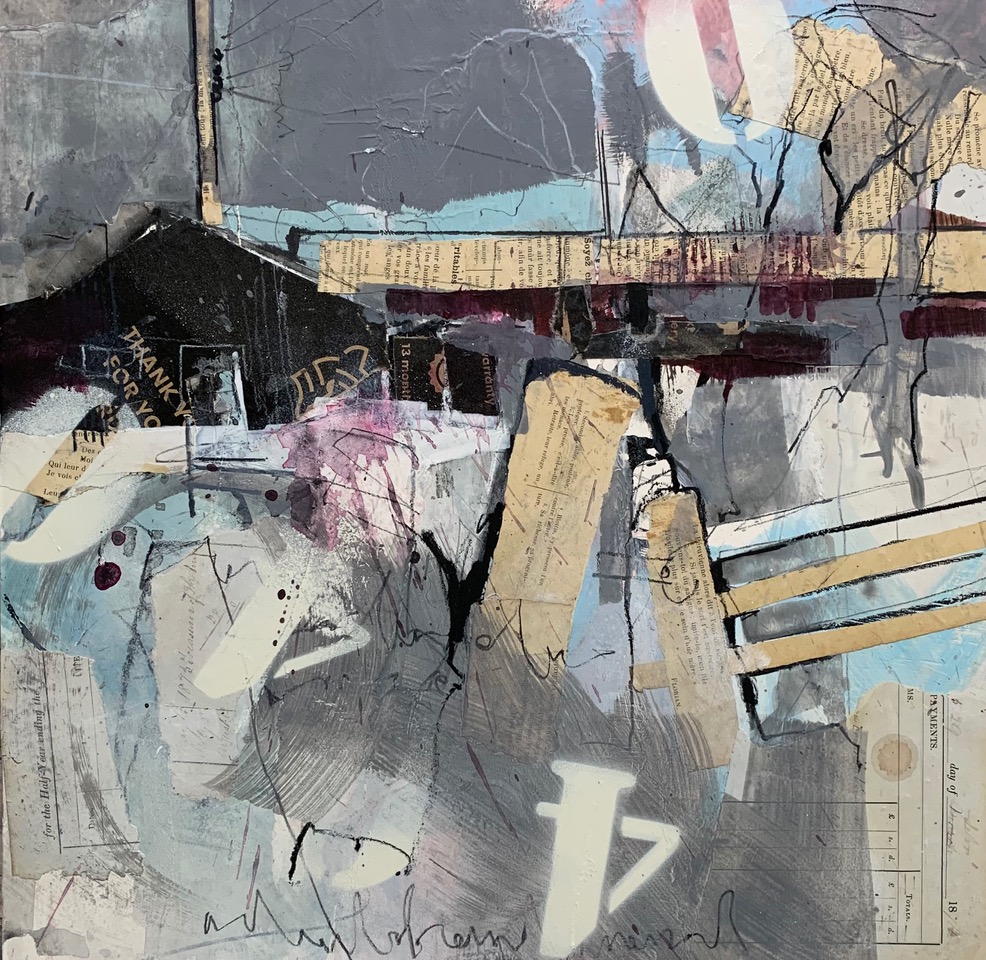
“Simplicity is Genius” is written over the door of your studio. Why do you have it up and expand on the meaning of it through one of your paintings?
Most of my work is held together by line, line is the essence of what I do. My work has been described as ‘organised chaos’ and there’s definitely some truth there. I see it as an asset to be able to allow the work to go through a stage of chaos before sorting it out by calming areas and simplifying. I use white to radically edit works. If they reach the stage of being ‘nice’ then they’re in for radical editing too
Contact:
Pete Monaghan
Aberystwyth, Wales, UK
hello@petemonaghan.com
Deborah Blakeley, Melbourne, Australia
Interview by Deborah Blakeley, August 2025
Images on these pages are all rights reserved by Pete Monaghan

Think a colleague or friend could benefit from this interview?
Knowledge is one of the biggest assets in any business. So why not forward this on to your friends and colleagues so they too can start taking advantage of the insightful information the artist has given?
Other artists you may be interested in:

